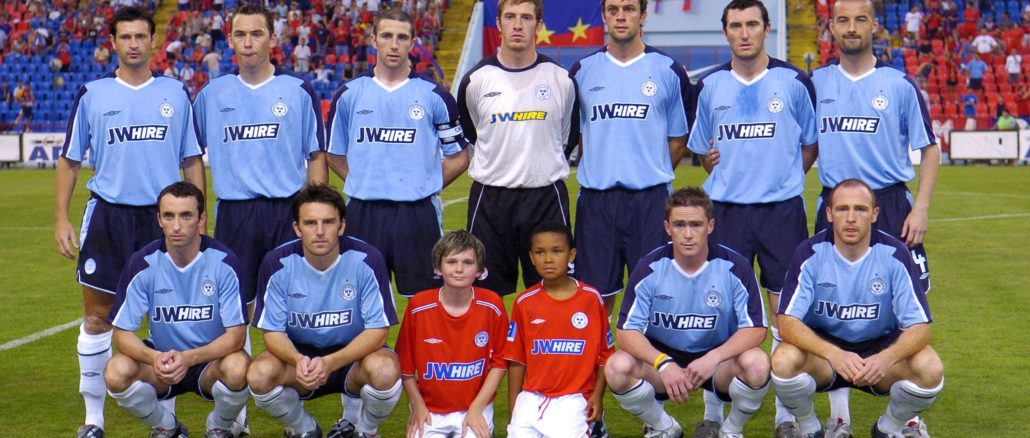
On Wednesday, September 30th, the Football Association of Ireland (FAI) released the SSE Airtricity League Consultation Process 2015, or the Conroy Report, as it has been dubbed in media circles.
The 75-page report, produced by Declan Conroy who played a major part in the FAI’s bid to host a UEFA Euro 2020 game in Dublin, has been described by FAI Chief Executive John Delaney as “the most comprehensive and thorough review of senior domestic football in Ireland,” but this simply isn’t the case. Mr. Conroy concludes that the League of Ireland should adopt the following structure, beginning in 2017:
• A two-division league, consisting of ten teams each.
• The last-placed team in the Premier Division is automatically relegated and the First Division champions are automatically promoted.
• The 8th and 9th-placed teams in the Premier Division play a round robin tournament along with the 2nd and 3rd-placed teams in the First Division, with a possibility of between one and three clubs changing division.
• The Premier Division splits into the top six and bottom four after three series of games. The top six play five more games and the bottom four play three more games.
This sounds awfully familiar, doesn’t it? Since the turn of the millennium, the Premier Division has changed its structure four times between ten teams and twelve teams (2002, 2004, 2008 and 2011). At present, there are 12 teams in the Premier Division and eight in the First Division. While on the surface it makes sense to even the divisions, anybody who follows the League of Ireland knows the only difference it will make is to subject two extra clubs to First Division purgatory.
The suggested split after three series of games is also ludicrous. The Scottish Professional Football League (SPFL) uses this approach and it hasn’t improved the standard of football at all. It also creates an incentive for teams to deliberately lose games. If the 6th and 7th-placed teams are close in points approaching the split, both teams would naturally want to be seventh when the split happens so they have an easier final series of games, helping them finish sixth and earn more prize money. To combat this issue, the SPFL has introduced a system wherein the 6th and 7th-placed teams cannot swap positions after the split, regardless of points. So theoretically, the 7th-placed team could finish the season with more points than a 4th-placed team and miss out on European football the following season.
If the League is to improve, the First Division needs to be abolished. When it was created in 1985, it served a purpose. It aided the transition of clubs like Bray Wanderers, Cobh Ramblers and Monaghan United into professional football. Now, its purpose is to simply exist so the League meets UEFA requirements.
To solve this problem, a 16-team League of Ireland must be created. The 2016 First Division can be used as a qualification campaign of sorts. The top four teams would gain promotion to the expanded league in 2017/18, which would revert to the traditional football calendar in order to align with the provincial senior leagues. The remaining four First Division teams would join their provincial senior league for the 2017/18 season.
Beginning in 2017/18, the 15th and 16th-placed League of Ireland teams would be automatically relegated, and the champions of each provincial senior league would enter a round robin to decide which two teams gain promotion to the League of Ireland. This structure would satisfy UEFA’s requirement which states the National League must not be ‘closed’. More importantly though, it creates a league pyramid, meaning there is a path of promotion and relegation between the top tier and bottom tier of club football in the country.
To make this structure sustainable, the FAI must divert from the course it has chosen with regard to prize money for League of Ireland clubs. In 2009, Bohemians received almost €300,000 for winning the Premier Division. Just two years later, Shamrock Rovers received €100,000 for winning the same league. FAI Chief Executive John Delaney’s salary (€360,000) amounts to more than the total prize pot for Premier Division and First Division clubs combined (€314,500).
In conclusion, there is no doubt that Mr. Conroy’s efforts to ignite a complete overhaul of the League of Ireland are genuine, but one must question his methods and his findings. It would appear he consulted with the same parties who were consulted before the release of the Genesis Report, 2006, which failed spectacularly. As a result, the Conroy Report is destined to follow the same path and be just another wooden horse in the merry-go-round that is professional football in Ireland.
Aidan Geraghty
Photo credit: Sportsfile




Leave a Reply